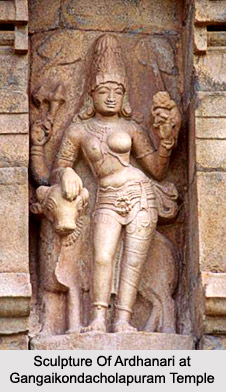 Built between 1020- 1029 AD the sculpture of Gangaikondacholapuram Temple shows the Northern Indian influence. This South Indian temple was commissioned by the Chola ruler, King Rajendra Chozhan, son of Raja Raja Chozhan. The sculpture of Gangaikondacholapuram Temple strictly follows the architectural idiom of the Chola temples.
Built between 1020- 1029 AD the sculpture of Gangaikondacholapuram Temple shows the Northern Indian influence. This South Indian temple was commissioned by the Chola ruler, King Rajendra Chozhan, son of Raja Raja Chozhan. The sculpture of Gangaikondacholapuram Temple strictly follows the architectural idiom of the Chola temples.
One of the most interesting features of the Gangaikondacholapuram Temple architecture is its vimanas. The carvings here are quite complex and it is these sculptures that pronounce the influence of the North Indian style. This temple has been carved out of the hard granite rock yet one will come across intricate works on the temple. In fact it is one of the Chola temples that move away from a simplistic style of sculpture and resorts to heavy ornamentation.
The most striking sculptures in Gangaikondacholapuram Temple are the Nataraja, the dancing Lord Ganesha, the coronation of King Rajendra Chozhan by Shiva and Parvati and the Ardhanari (the man-woman manifestation of Lord Shiva). The last one is the most fascinating where one half of the image is represented as a male and the other half is a female form. The two halves have been distinguished with the help of decoration. The female form has been more intricately designed as compared to the masculine one. An image like this signifies duality of divine energy.
The garbhagriha or the sanctum sanctorum houses the Shiva linga that is four meter high. This inner chamber is protected by two walls. Such an arrangement was made to provide the royal family with privacy while worshipping. At the entrance of the sanctorum an image of Goddess Saraswati has been crafted. This kind of sculpture suggests the Chalukyan influence. Another image that is reminiscent of the Chalukyas is the Navagrahas and `Suryapita` icon. The latter symbolizes the worship of the Sun god.
Inscriptions on the temple walls are also part of its architecture. Apart from these the walls of the temple has been put to good use by the sculptors who have carved several tales of bravery here. Events like land donations under the Chola rulers and the coronation ceremony of the kings are also depicted in form of sculptures in Gangaikondacholapuram Temple.
Although the shrine has been plundered several times in ancient India yet the sculpture and architecture of Gangaikondacholapuram Temple remains unscathed.



















